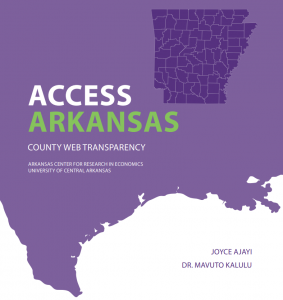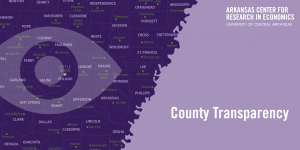
Transparency has many benefits. It enhances accountability. It instills fiscal discipline. It promotes trust, and reduces corruption. These are all things government officials should strive for. With this in mind, ACRE published the second edition of Access Arkansas: County Web Transparency, produced by ACRE Policy Analysts Mavuto Kalulu and Joyce Ajayi, on December 19, 2019.
The study focuses on web transparency because access to the internet has increased drastically in Arkansas in rural areas, from 16 percent in 2013 to 58 percent in 2016. They rank each Arkansas county in web transparency by how much financial, political and administrative information their websites contain.
Kalulu and Ajayi begin the report by noting some improvement on overall transparency scores since the inaugural index released in September, 2018. In 2018 four counties published at least 50 percent of the important public information included in our index. In 2019 eight counties do. The current index shows that, on average, Arkansas counties are publishing about 21 percent of the important information included in the index compared to about 15 percent in 2018.
Washington County was once again the most web-transparent county in Arkansas, with a total score of 0.952.
Arkansas counties earned an F grade for web transparency in the 2013 Transparency Report Card produced by the Sunshine Review. Kalulu and Ajayi hope the index will motivate Arkansas counties to continue to improve access to this important information for their constituents. This index will be updated regularly, and provides two services. First, it will inform citizens about the level of their county government’s transparency as well as allow them to monitor the improvements the county is making. Second, it will provide researchers information regarding transparency and will allow them to conduct research examining the relationship between transparency and economic and socioeconomic factors.
The index ranks counties on a score from 0 to 1 by combining the three types of transparency listed above: fiscal, administrative, and political. Fiscal transparency is the disclosure of financial information. Administrative transparency relates to the openness of government activities and processes, while political transparency relates to the transparency of elected officials and quorum courts.
To see more of our work relating to this topic, you can go here.

